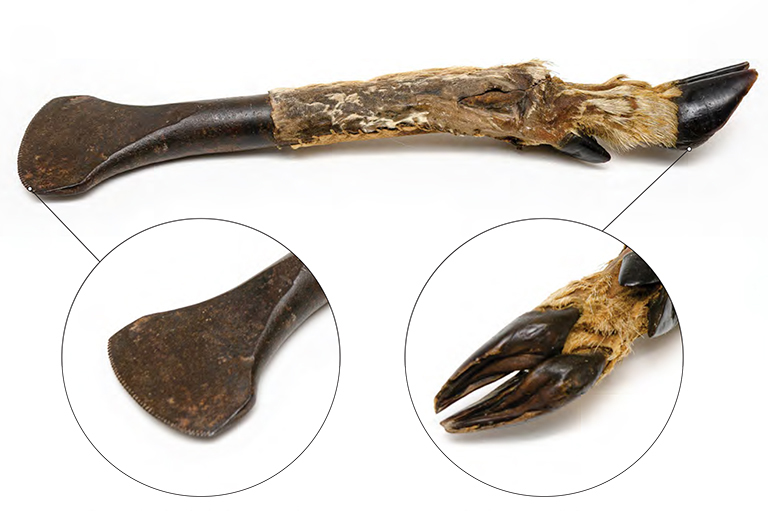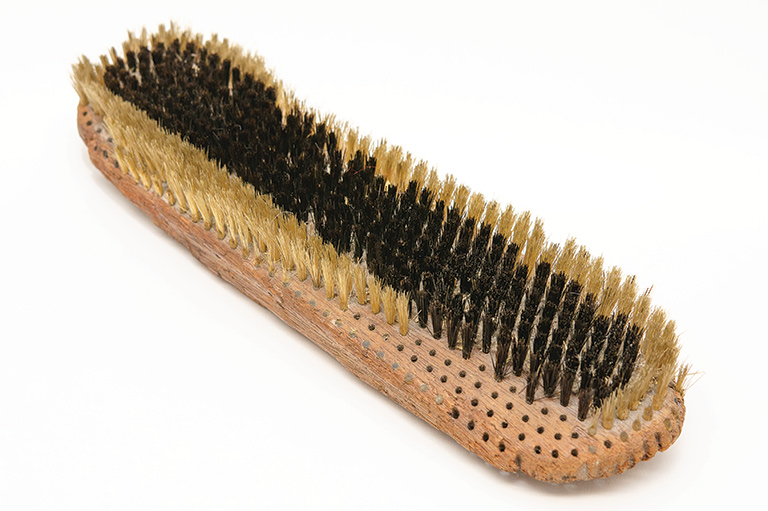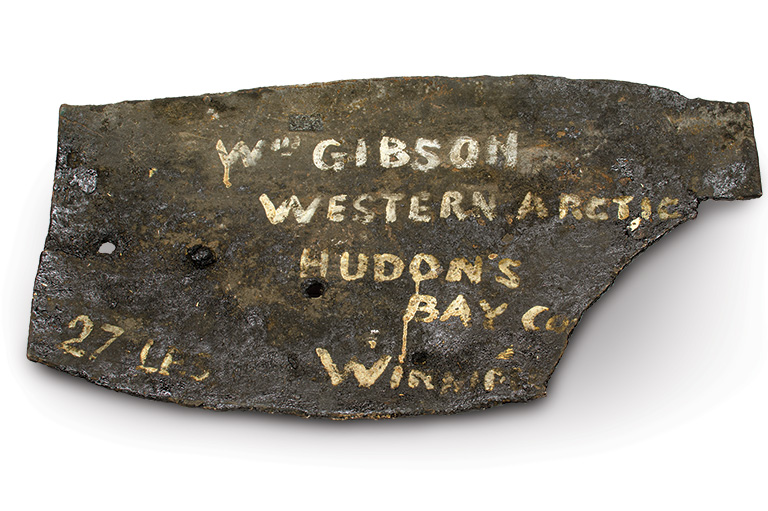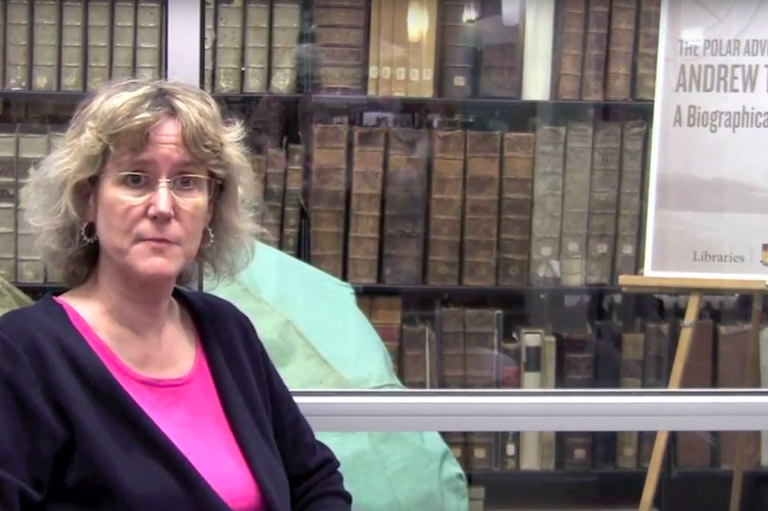Flesher

Iron fleshers come in a variety of forms, including this one with a deer-foot handle. A flesher is used to process animal hides, helping to scrape away meat, fat, fascia, and hair.
Most historical fleshers were “country-made” — that is, they were made here in what is now called Canada, rather than being brought from Europe as trade goods. Sometimes they were made by repurposing other metal implements (gun barrels were a popular choice), but often fleshers were made by taking the shin bone of an animal, cutting off the distal end, and sharpening the bone to make a scraping surface.
This flesher is unusual. Of the fifty-six fleshers within the Manitoba Museum’s Anthropology and HBC collections, this is the only one with a fully intact deer-foot handle. The record states that it is from Paul First Nation in Alberta, but there are few details related to its acquisition. It was part of the collection of Dr. W.E. Anderson, a physician who was based out of Portage la Prairie, Manitoba, and who amassed a large collection that he sold to the Hudson’s Bay Company in 1921.
With 7 uniquely curated newsletters to choose from, we have something for everyone.
We hope you’ll help us continue to share fascinating stories about Canada’s past by making a donation to Canada’s History Society today.
We highlight our nation’s diverse past by telling stories that illuminate the people, places, and events that unite us as Canadians, and by making those stories accessible to everyone through our free online content.
We are a registered charity that depends on contributions from readers like you to share inspiring and informative stories with students and citizens of all ages — award-winning stories written by Canada’s top historians, authors, journalists, and history enthusiasts.
Any amount helps, or better yet, start a monthly donation today. Your support makes all the difference. Thank you!
Themes associated with this article
Advertisement
Save as much as 40% off the cover price! 4 issues per year as low as $29.95. Available in print and digital. Tariff-exempt!









